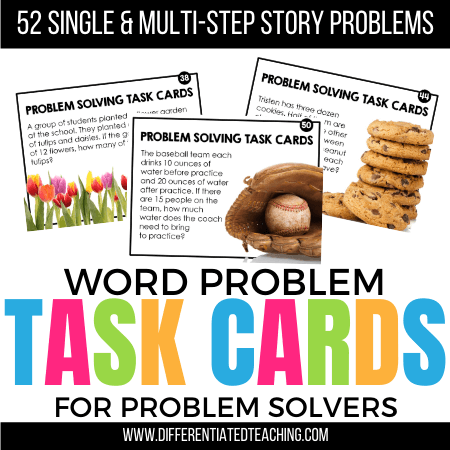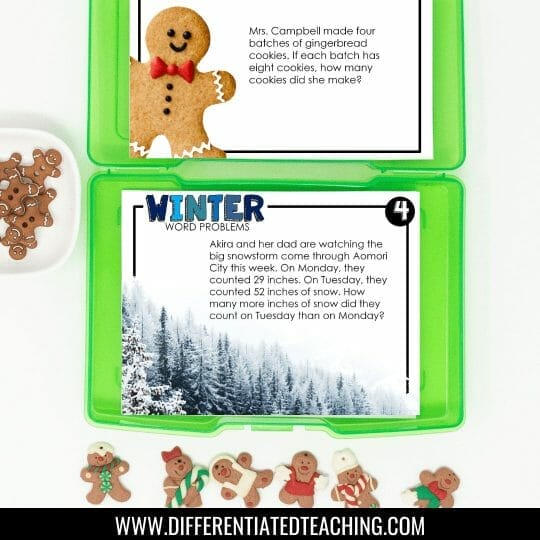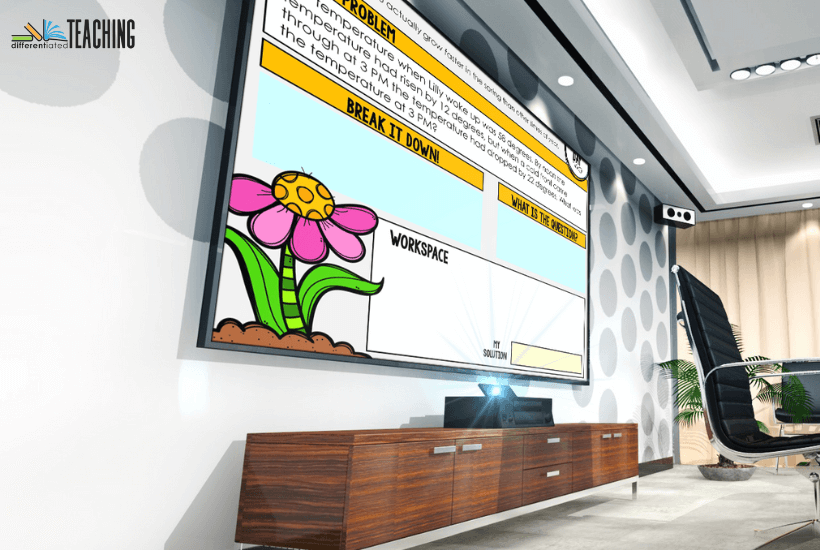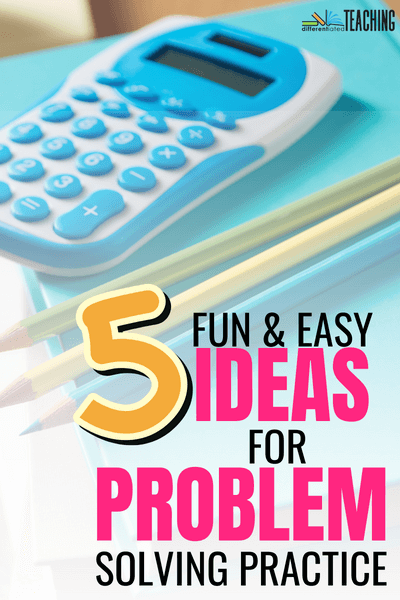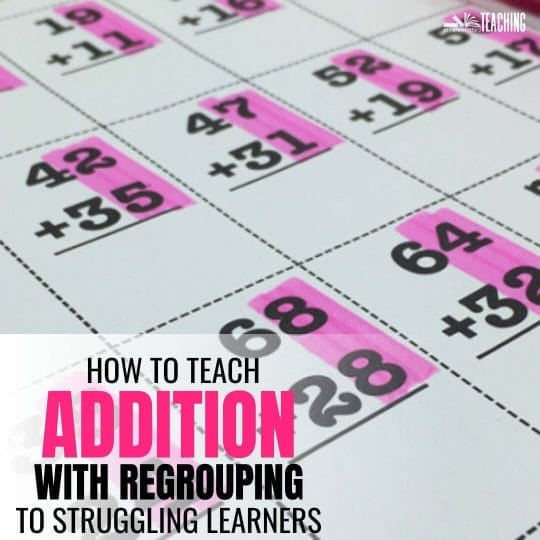5 Fun Ways to Teach Word Problems & Engage Students
Problem-solving is vital for math success, which we can all foster in our students. For many, word problems seem intimidating. They cringe at the mere mention of story problems, feeling daunted by the challenge. But who says tackling word problems has to be mundane?
Today, I’m eager to introduce fun ways to teach word problems that will invigorate your math sessions. With these lively methods, you might turn some problem-solving skeptics into enthusiasts!
5+ Fun Ways to Teach Word Problems Your Students Will LOVE
These fun ways to teach word problems will transform the daunting realm of story problems into an engaging and delightful journey. Whether through a word problem scavenger hunt or by tapping into students’ unique interests, these techniques ensure your learners grasp and excel in solving math problems.
You can easily adapt each activity to cater to the individual needs of your students, ensuring differentiation and personalization. For instance, if students grapple with a specific type of story problem, craft a game or activity that zooms in on that challenge. For those who lean towards visual learning, provide a set of illustrations for them to decipher.
1. Make a game out of it! Make word problem activities interactive.
Many students find problem-solving boring and tedious. Adding a gaming element to the mix can bring some excitement back for learners, and the great news is there are so many options for HOW you do this.
Here are two options that my students have loved:
Math Problem Solving Task Card Scavenger Hunt
Turn word problem task cards into a classroom scavenger hunt by posting them in secret locations around the room.
Add 3-4 answer choices on separate index cards under each task card. On the back of the card with the correct answer, give a clue to find the next task card.
If you’re looking for a ready-made set of task cards to start with, here’s a great option: Word Problem Task Cards
Word Problem Escape Challenge
It can be hard to find word problem activities that cater to differentiation. However, this is a great way to scaffold story problems for struggling learners in a way that feels FUN.
Take your problems and break down the skills students will need to have. Each of these will become one step of the escape room, leading to the final step, where they’ll be asked to solve a multi-step word problem to “escape.”
For example, pull all the computations students will eventually do for your problems. Use these to create a secret coded message. Students must solve the message to get to the next step. However, they won’t know they’ve already practiced the math needed for the word problems!
Continue this progression by giving parts of problems and having them work up to problem-solving to escape.
2. Use unique manipulatives to help students visualize the story problem.
It’s easy to get stuck in rote practice of the same problems. Instead, think outside the box! Use visuals and fun manipulatives that are not only engaging for students but also help them better understand the problem.
For example, when working on money problems, you can have students use money to model transactions or create a store to buy items and calculate change. However, this is just one option. I’ve found mini-erasers come in so many different shapes that I can often find examples to help my students better understand the problem. I recently used food-shaped mini-erasers to model a problem to find how many items could be purchased within a given budget. These manipulatives were much more fun and engaging, making it easy for my learner to see available alternatives. You can also find great holiday-themed miniatures at craft stores, like the cute mini gingerbread men you see below.
3. Bring on the drama! Role-play math word problems.
Drama in the classroom may sound like a bad thing. Yet, in this case, it can be a great way to get students excited about math problem solving. Get creative and have students act out word problems by creating characters, setting a scene, and having them act out the problem.
Role-playing has many benefits for learners, including boosting engagement, motivation, and helping students see themselves as problem solvers.
For example, have them create a store scenario where they role-play, asking for change or using coupons. This can help students better visualize the problem. It also makes story problems easier for learners who need to see a story unfold before them.
4. Utilize cooperative learning strategies during word problem activities.
Working with a partner can make math problem-solving much more enjoyable for students. This is especially true if you use cooperative learning strategies to engage learners meaningfully. A few ideas include having students take turns solving parts of the problem, having them check each other’s work and offer feedback, or having students create their word problems to present to the class.
Using cooperative learning strategies allows students to practice problem-solving in a way that is more engaging and encourages collaboration. It also helps develop higher-order thinking skills, such as analyzing and critiquing, that are important for success in problem-solving.
5. Make word problems relevant to real-life.
Students often struggle with word problems because they can’t connect with the scenarios. To make word problems more relevant and exciting to students, try incorporating your students’ names, seasonal topics, or holidays into the problem. It will help them connect and tie the math to something real in their everyday lives.
Taking the time to craft word problems around what is happening in their lives makes mathematical mastery easier, more exciting, and enjoyable for everyone involved. It can also make them more willing to engage in the productive struggle required to become master problem solvers.
My Problem of the Day: Daily Problem Solving resources are designed with this engagement strategy in mind! Each month’s problems incorporate seasonal themes and holidays, and weekly problems center around a fun fact and single theme to engage learners.
Available for grades 2-8, click your grade level below to grab a free week to try it out with your learners and learn more.
Problem Solving doesn’t have to be boring!
Math problem solving is a critical skill for students to acquire. Incorporating fun and interactive strategies such as making a game out of it, using manipulatives, role-playing, cooperative learning, and making it relevant to real life can make all the difference in ensuring your students are confident problem solvers and further developing their love of math.
By applying these fun ways to teach word problems, you can make math problem-solving practice more enjoyable for your students. Not only will they be engaged in the word problem activities, but it will also help them develop a deeper understanding of the concepts. Give it a try and see how your students respond! Good luck!


